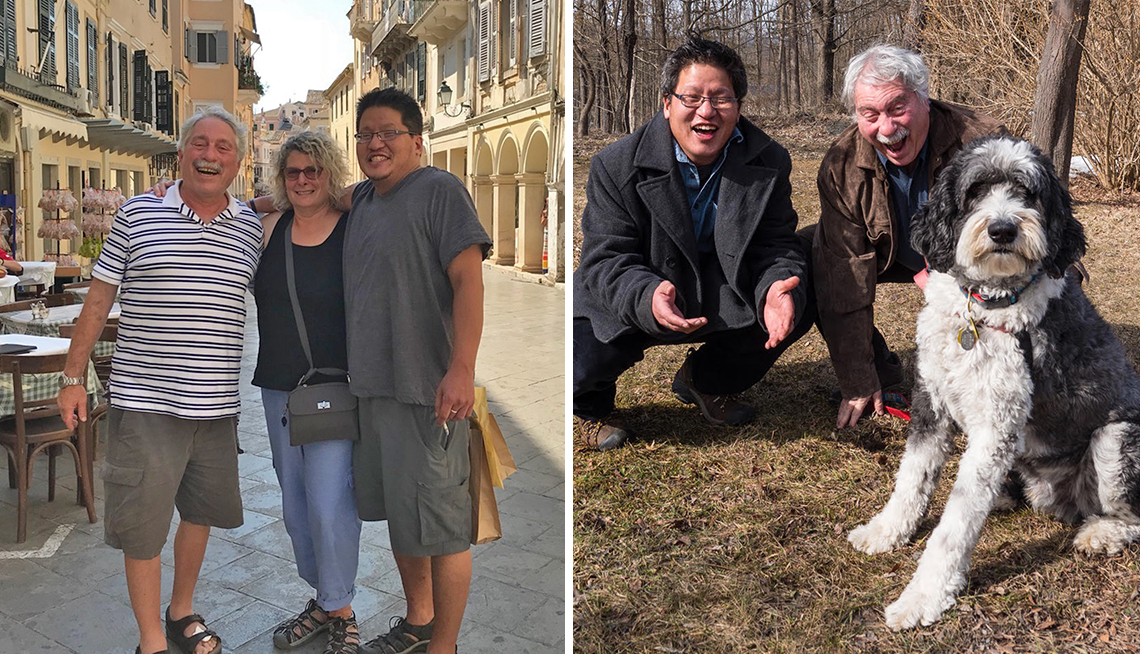
Handling an adult child's death: the aftermath of long-term caregiving
- Select a language for the TTS:
- UK English Female
- UK English Male
- US English Female
- US English Male
- Australian Female
- Australian Male
- Language selected: (auto detect) - EN
Play all audios:

At the memorial, strangers shared stories of Bart comforting them with his motto, “Never give up, never surrender.” Whether Bart was talking to someone experiencing seizures, or the mother
of a child with spina bifida, the stories kept coming. “He had the gift of being able to see and share the humor and humanity in ordinary things,” Joel says. “And it was incredibly
comforting to learn how much he had shared. “There is a saying from the Dalai Lama, ‘If you want others to be happy, practice compassion. If you want to be happy, practice compassion.’ Bart
lived that way, but we didn’t realize quite how fully until everyone reached out after his death and shared their stories." Bart, Miguel (Cassidy's husband), Cassidy, Dayle and
Joel. Courtesy Joel Goldstein In 1985, Joel and Dayle adopted Bart from Korea when he was 5 months old. Six years later, they adopted his sister Cassidy from the same orphanage. Brother and
sister were very close, and Bart saw himself as Cassidy’s protector, nicknaming her “my snow angel” because she arrived home in winter. In 2001, Bart was nearly 17 and Cassidy just 11 when
he was riding with friends in a packed car that got in a horrific accident. He was in a coma for 30 days and suffered a traumatic brain injury (TBI). Nine months post-injury, the hospital
and school advised Joel and Dayle to put Bart in an institution. Instead, the couple dug into learning everything they could about TBIs and some of the existing alternative therapies. They
enrolled Bart in school, a half day in special education with a full-time aide, although the fatigue from Bart’s injuries meant he frequently fell asleep in class. NAVIGATING THE NEW NORMAL
Bart managed to get through high school and graduated in 2005, two “very tough years” after the rest of his class. At that point, Cassidy was a freshman, and she had witnessed too many angry
outbursts and episodes. There were a number of years where she did not want much to do with her brother. Joel recalls one awful day when Cassidy witnessed Bart slamming his door for a solid
half-hour, screaming obscenities. “I never fixed it,” Joel says. “I wanted it to be a reminder to him of what had happened.” Bart’s life after high school was impacted by what Joel calls
“a conspiracy of decency — good people who wanted to help him without asking for anything in return.” A priest helped Bart navigate admission into Maria College in Albany, New York, but
eventually the work was too demanding. He lived in a supervised apartment complex while continuing his cognitive remediation and rehabilitation. Slowly, his disinhibited behavior resulting
from the brain injury began to subside and he was able to better regulate his emotions. Eventually, Bart was able to live on his own in a small apartment within walking distance of his
parents. He found a job at a pub and restaurant in Delmar, New York, called Swifty’s. Over the next eight years, he became a beloved character at the establishment, connecting with everyone
through his signature sense of humor and sometimes even grabbing the microphone from the singer at the end of the night. The patrons, in turn, cared for Bart, giving him rides home if the
weather was bad, and looking after him in wonderful ways.
